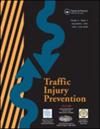NHTSA碰撞调查抽样系统(CISS)不可靠,不准确,不能估计机动车碰撞中的严重伤害。
IF 1.6
3区 工程技术
Q3 PUBLIC, ENVIRONMENTAL & OCCUPATIONAL HEALTH
引用次数: 0
摘要
目的:NHTSA管理的2017-2022年碰撞调查抽样系统(CISS)现场数据记录了美国机动车碰撞中严重伤害的错误和不准确性。方法:从NHTSA网站下载所有3-5岁和6-12岁儿童CISS严重非致死性损伤病例。对每个病例进行总结:1)按年份、PSU和编号进行病例识别;2)病例加权因子和领域;3)车辆品牌、型号和型号年份;4)年龄、座位位置和儿童最大伤害严重程度(MAIS)。严重伤害的撞车事故根据车辆的年龄分为02、05和08三个类别。与组中的其他病例相比,有几个病例具有异常高的权重因子(casewgt)。确定了高案例权重的来源。结果:3 ~ 5岁儿童MAIS 3 ~ 6损伤8例。加权和为3538.8估计6年全国发病率。案例#5的权重为22223.3,占总数的63%。6 ~ 12岁儿童MAIS 4 ~ 6损伤8例。加权和为5817.9。案例#9的权重为5199.6,占总数的89%。6 ~ 12岁儿童MAIS 3型损伤18例。案例#22的权重为1264.5,案例#25的权重为937.8,占总数的52%。高案例权重可追溯到由于不正确的损伤严重程度和车辆年龄而导致的域错误。自2012年以来,NHTSA一直意识到域名错误和异常高的大小写权重。他们没有纠正高权重的错误。他们忽略了CISS和NASS-CDS数据错误对严重损伤的影响。数据错误导致了对严重伤害的不现实和不准确的估计。CISS和NASS-CDS还有其他问题。结论:在CISS碰撞选择程序、领域和案例权重中普遍存在错误,这使得严重伤害的估计不可靠。没有质量控制来纠正数据错误。与早期的NASS-CDS相比,CISS病例是不完整和有限的。CISS抽样程序是不正确的,因为它依赖于车辆年龄来选择病例。NASS-CDS抽样依赖于乘员受伤严重程度。CISS和NASS-CDS错误地处理多车碰撞。需要全面审查和修订国家信息系统和国家信息系统数据库,以纠正错误,使这些数据库从1980年代至今都能兼容。NHTSA需要披露有关修订后的NASS-CDS和CISS文件的信息。在线NASS-CDS和CISS文件是不正确的,不足以估计机动车碰撞中的严重伤害。CISS的采样频率依赖于2011年NASS-CDS,这与今天的严重伤害事故无关。2011年NASS-CDS没有调查老旧车辆。在种族、性别和社会经济地位是重要因素的老旧车辆中,CISS对严重伤害的抽样不足。CISS和NASS-CDS并不是美国撞车事故中严重伤害的代表性样本。本文章由计算机程序翻译,如有差异,请以英文原文为准。
NHTSA crash investigation sampling system (CISS) is unreliable, inaccurate and does not estimate serious injury in motor vehicle crashes
Objective
Errors and inaccuracies are documented in the 2017–2022 CISS (Crash Investigation Sampling System) field data managed by NHTSA on serious injury in motor vehicle crashes in the US.
Methods
All CISS cases of serious, non-fatal injury to 3–5 and 6–12 year old (yo) children were downloaded from the NHTSA website. Each case was summarized for the: 1) case identification by year, PSU and number, 2) case weighting factor and domain, 3) vehicle make, model and model year and 4) age, seating position and maximum injury severity (MAIS) to the child. Crashes with serious injury are in domains 02, 05 and 08 depending on the age of the vehicle. There were several cases with unusually high weighting factors (casewgt) in comparison to others in the groups. The sources of the high case weights were identified.
Results
There were 8 cases with MAIS 3–6 injury to 3–5 yo children. The weighted sum was 3,538.8 estimated national incidence for 6 years. Case #5 had a weight of 2,223.3, which was 63% of the sum. There were 8 cases with MAIS 4–6 injury to 6–12 yo children. The weighted sum was 5,817.9. Case #9 had a weight of 5,199.6, which was 89% of the sum. There were 18 cases with MAIS 3 injury to 6–12 yo children. Case #22 had a weight of 1,264.5 and case #25 937.8, representing 52% of the sum. The high case weights were traced to errors in the domain due to incorrect injury severity and vehicle age. NHTSA has been aware of the domain errors and unusually high case weights since 2012. They have not corrected the errors in high case weights. They have ignored the effects of errors in the CISS and NASS-CDS data on serious injury. The data errors lead to unrealistic and inaccurate estimates of serious injury. There are other problems with CISS and NASS-CDS.
Conclusions
There are pervasive errors in the CISS crash selection procedure, domains and case weights that make estimates of serious injury unreliable. There is no quality control to correct the data errors. CISS cases are incomplete and limited in comparison to the earlier NASS-CDS.
CISS sampling procedure is incorrect by relying on vehicle age for case selection. NASS-CDS sampling relied on occupant injury severity. CISS and NASS-CDS incorrectly handle multi-vehicle crashes. A complete review and revision of CISS and NASS-CDS is needed to correct errors so the databases are compatible from the 1980s to today. NHTSA needs to disclose information about the revised NASS-CDS and CISS files. The online NASS-CDS and CISS files are incorrect and inadequate to estimate serious injury in motor vehicle crashes.
CISS sampling frequencies rely on 2011 NASS-CDS, which is not relevant to serious injury crashes today. The 2011 NASS-CDS did not investigate older vehicles. CISS under-samples serious injury in older vehicles where race, gender and SES are important factors. CISS and NASS-CDS are not representative samples of serious injury in US crashes.
求助全文
通过发布文献求助,成功后即可免费获取论文全文。
去求助
来源期刊

Traffic Injury Prevention
PUBLIC, ENVIRONMENTAL & OCCUPATIONAL HEALTH-
CiteScore
3.60
自引率
10.00%
发文量
137
审稿时长
3 months
期刊介绍:
The purpose of Traffic Injury Prevention is to bridge the disciplines of medicine, engineering, public health and traffic safety in order to foster the science of traffic injury prevention. The archival journal focuses on research, interventions and evaluations within the areas of traffic safety, crash causation, injury prevention and treatment.
General topics within the journal''s scope are driver behavior, road infrastructure, emerging crash avoidance technologies, crash and injury epidemiology, alcohol and drugs, impact injury biomechanics, vehicle crashworthiness, occupant restraints, pedestrian safety, evaluation of interventions, economic consequences and emergency and clinical care with specific application to traffic injury prevention. The journal includes full length papers, review articles, case studies, brief technical notes and commentaries.
 求助内容:
求助内容: 应助结果提醒方式:
应助结果提醒方式:


